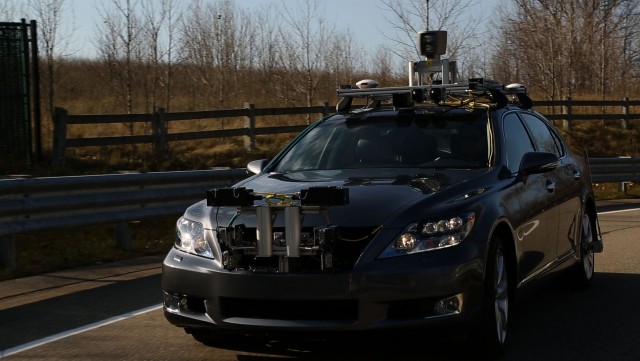Toyota has put its advanced active safety research vehicle on display at the Consumer Electronics Show (CES) in Las Vegas. Based on a Lexus LS, the vehicle demonstrates a variety of autonomous safety technologies designed to reduce traffic fatalities and injuries.
The guiding strategy, called the Integrated Safety Management Concept, apparently treats traffic safety as a holistic blend of people, vehicles and the environment. This is intended to work through five phases of operation: from the start of the journey, active safety to avoid a crash, pre-crash - aimed at preparing for a collision, passive safety to survive a crash and calling for rescue after a crash. Despite the car's array of sensors Toyota states it is not trying to make a driverless vehicle, but a car with an intelligent and attentive electronic co-pilot.
This is an engineering prototype, not a design concept, so the otherwise standard Lexus LS has been covered in cameras and other equipment. On the roof there is a 360-degree Light Detection and Ranging (LIDAR) laser to detect objects around the car with a 70-metre range. High definition colour cameras detect objects up to 150 metres away, the front-facing camera can read traffic lights while the side cameras spot approaching vehicles. Radar is used to measure the position and speed of objects at traffic intersections.
So the car knows where it is going, GPS antennae on the roof measure the angle and orientation of the vehicle. This is backed up by a distance measurement indicator on the back wheel to record speed and distance. Inertial measurement units on the roof sense acceleration and angle changes to determine vehicle behaviour.
Part of Toyota's vision for a safer future is vehicle-to-vehicle and vehicle-to-roadside communication. The idea is that vehicles can warn other drivers of collisions or impending accidents. The communications network is known as Intelligent Transportation System (ITS), which is being developed by a number of motor manufacturers.

